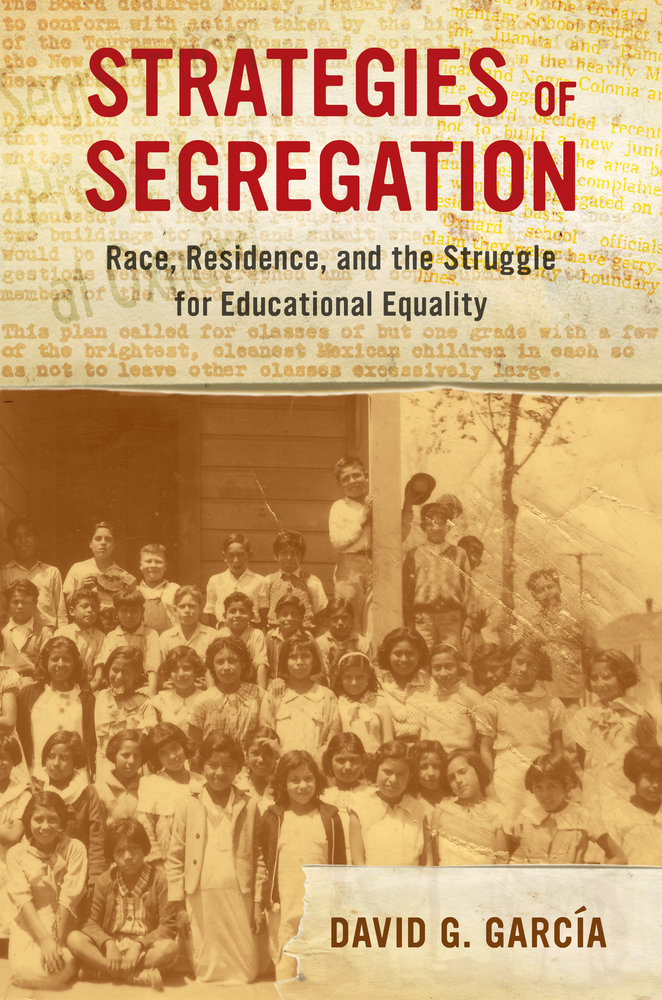We missed this Nov. 2017 publication from the University of California Press:
Strategies of Segregation: Race, Residence, and the Struggle for Educational Equality, by
David G. García (University of California, Los Angeles). A description from the Press:
 Strategies of Segregation unearths the ideological and structural architecture of enduring racial inequality within and beyond schools in Oxnard, California. In this meticulously researched narrative spanning 1903 to 1974, David G. García excavates an extensive array of archival sources to expose a separate and unequal school system and its purposeful links with racially restrictive housing covenants. He recovers powerful oral accounts of Mexican Americans and African Americans who endured disparate treatment and protested discrimination. His analysis is skillfully woven into a compelling narrative that culminates in an examination of one of the nation’s first desegregation cases filed jointly by Mexican American and Black plaintiffs. This transdisciplinary history advances our understanding of racism and community resistance across time and place.
Strategies of Segregation unearths the ideological and structural architecture of enduring racial inequality within and beyond schools in Oxnard, California. In this meticulously researched narrative spanning 1903 to 1974, David G. García excavates an extensive array of archival sources to expose a separate and unequal school system and its purposeful links with racially restrictive housing covenants. He recovers powerful oral accounts of Mexican Americans and African Americans who endured disparate treatment and protested discrimination. His analysis is skillfully woven into a compelling narrative that culminates in an examination of one of the nation’s first desegregation cases filed jointly by Mexican American and Black plaintiffs. This transdisciplinary history advances our understanding of racism and community resistance across time and place.
A few blurbs:
“Strategies of Segregation is a carefully researched, effectively argued, and beautifully written study of the centrality of school segregation to the racialization of space and the spatialization of race in Oxnard, California. Its deft blend of evidence from archival and oral history sources makes a major contribution to the histories of school and residential segregation. This fine book also reveals how Mexican Americans and Blacks fought back and battled for educational equity and racial justice.”—George Lipsitz
“Through a study of how school segregation and residential segregation reinforce one another, Strategies of Segregation examines how structural racism became embedded in Oxnard, a city just north of Los Angeles. David G. García’s analysis across multiple urban institutions and interlocking racial practices will make this a model book for years to come.”—Natalia Molina
More information is available
here.
Strategies of Segregation unearths the ideological and structural architecture of enduring racial inequality within and beyond schools in Oxnard, California. In this meticulously researched narrative spanning 1903 to 1974, David G. García excavates an extensive array of archival sources to expose a separate and unequal school system and its purposeful links with racially restrictive housing covenants. He recovers powerful oral accounts of Mexican Americans and African Americans who endured disparate treatment and protested discrimination. His analysis is skillfully woven into a compelling narrative that culminates in an examination of one of the nation’s first desegregation cases filed jointly by Mexican American and Black plaintiffs. This transdisciplinary history advances our understanding of racism and community resistance across time and place.